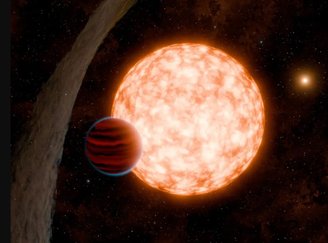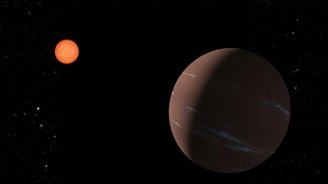In 2024, the United States National Aeronautics and Space Administration (NASA), the European Space Agency (ESA), the Canadian Space Agency (CSA) and others, major scientific discoveries about the mysteries of our universe.
Scientists, institutes and universities around the world have conducted numerous studies and observations, resulting in space discoveries that may provide further answers to the mysteries of the cosmos.
Thousands of new cosmic objects have been detected in distant regions of the universe, as well as black holes, stars, exoplanets.
That’s why we collected official information on the subject from NASA, ESA and other space agencies. Some of the big scientific discoveries in space in 2024. Check this out!
Record-mass stellar black hole in the Milky Way
One of the most impressive discoveries of the year was the detection of the largest stellar black hole ever found in the Milky Way. The supermassive structure, nicknamed Gaia BH3, is about 33 times the mass of the Sun and is located about 2,000 light-years from Earth.
Using data from the Gaia satellite, the Very Large Telescope (VLT), the European Southern Observatory (ESO) and other ground-based observatories, the team was able to analyze the chemical composition of the black hole’s companion star. Thus, they detected direct evidence of how metal-poor stars can form such massive black holes.
It is important to emphasize that this black hole is not the largest black hole in our galaxy, as Sagittarius A* holds this record.. However, Gaia BH3 is the largest star ever formed from a star in the Milky Way.
“No one expected to find a hitherto undetected high-mass black hole lurking nearby. This is a once-in-a-lifetime discovery,” astronomer Pasquale Panuzzo said in an official NASA statement.
newborn planet
According to information obtained from the Transiting Exoplanet Survey Satellite (TESS), A team of scientists has made a rare discovery: the observation of a newborn planet.
The planet, called IRAS 04125+2902 b, is only three million years old. This number may seem high, but it is insignificant in terms of cosmic time. For example, Earth formed about 4.6 billion years ago; So three million years is practically nothing.

In their statement, scientists explain that these young planets are often hidden by disks of gas and dust. but a peculiar deformation in the outer disk allowed the TESS satellite to perform the observation.
“The massive planet, probably still glowing from the heat of its formation, is located in the Taurus Molecular Cloud, an active stellar chamber containing hundreds of newborn stars about 430 light-years away,” the discovery statement describes.
Sun reaches solar maximum and intensifies space weather
It wasn’t just distant worlds and black holes that attracted attention in 2024. Our Sun has entered ‘solar maximum’, the peak period of magnetic activity in the solar cycle that occurs every 11 years.
The number of sunspots and geomagnetic storms increases during maximums and can affect satellites, navigation systems, and Earth’s power grids; So much so that some experts suggest that this phenomenon may cause an internet outage.
Despite possible problems, This peak in solar activity offers scientists a unique opportunity to study the Sun’s processes in more detail.
“During solar maximum, the number of sunspots and therefore the amount of solar activity increases. This increase in activity presents an exciting opportunity to learn about our nearest star – but it also has real impacts on Earth and our solar system,” said Jamie Favors, director of the Space Weather Program at NASA Headquarters.
Super Earth is close to us
Scientists have discovered a super-Earth-type planet orbiting a star just 137 light-years from Earth that could offer the ideal temperature to allow liquid water on its surface.

baptized by TOI-715 b, the planet orbiting a red dwarf star, is part of a star system that could host another planet similar to our own.
“The recently discovered super-Earth TOI-715 b may be appearing at the right time. Its parent star is a red dwarf that is smaller and cooler than our Sun; “Many of these stars are known to host small, rocky worlds,” explains NASA.
Eye-like exoplanet
A group of researchers, based on data collected by the James Webb Space Telescope (JWST) in late 2023, Discovery of a new exoplanet that may contain water or ice: LHS 1140 b. In addition to these features, its eye-like appearance is also intriguing.

Scientists were impressed by the data collected This is the first time evidence of an atmosphere has been observed on such an exoplanet in the habitable zone.
“Of all currently known temperate exoplanets, LHS 1140 b may one day be our best chance for indirect confirmation of liquid water on the surface of an alien world beyond our solar system. This would be an important milestone in the search for potentially habitable exoplanets,” said a study on the discovery. its lead author, Charles Cadieux, said in an official statement.
Did you enjoy this retrospective of the year’s biggest space discoveries? Then take the opportunity to explore an Earth-like planet covered in lava. Until next time!
Source: Tec Mundo
I’m Blaine Morgan, an experienced journalist and writer with over 8 years of experience in the tech industry. My expertise lies in writing about technology news and trends, covering everything from cutting-edge gadgets to emerging software developments. I’ve written for several leading publications including Gadget Onus where I am an author.












